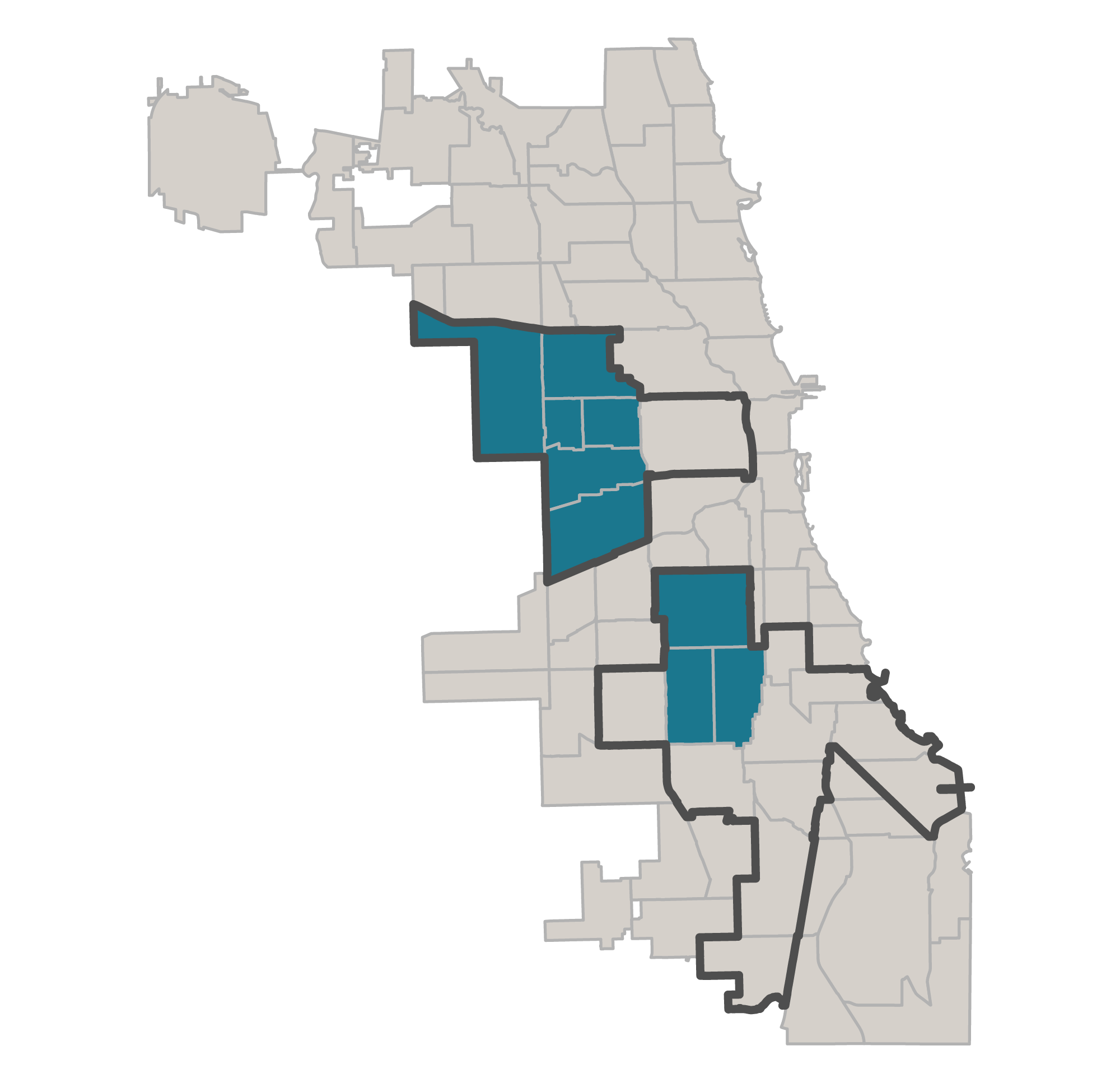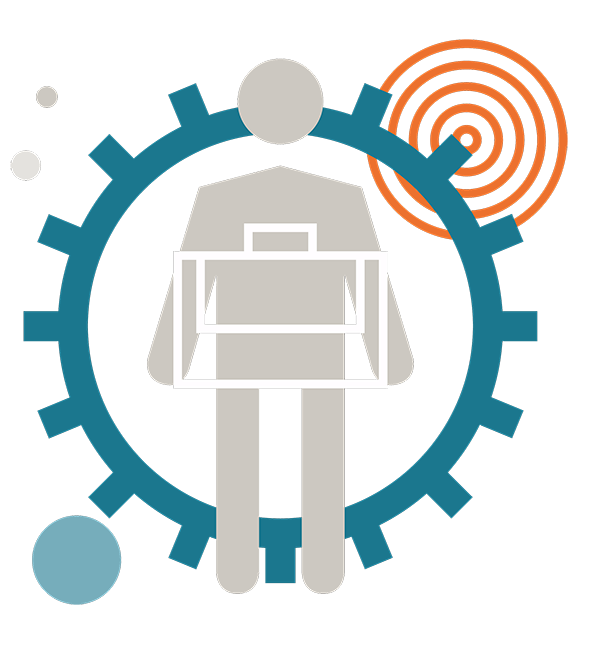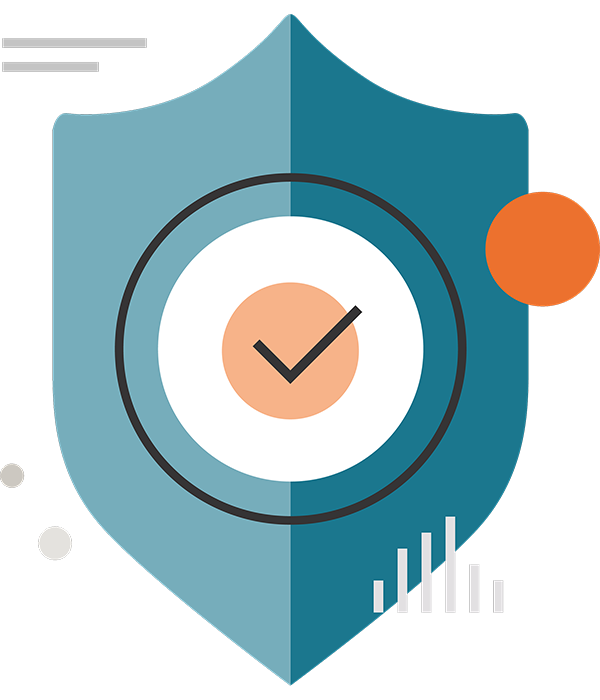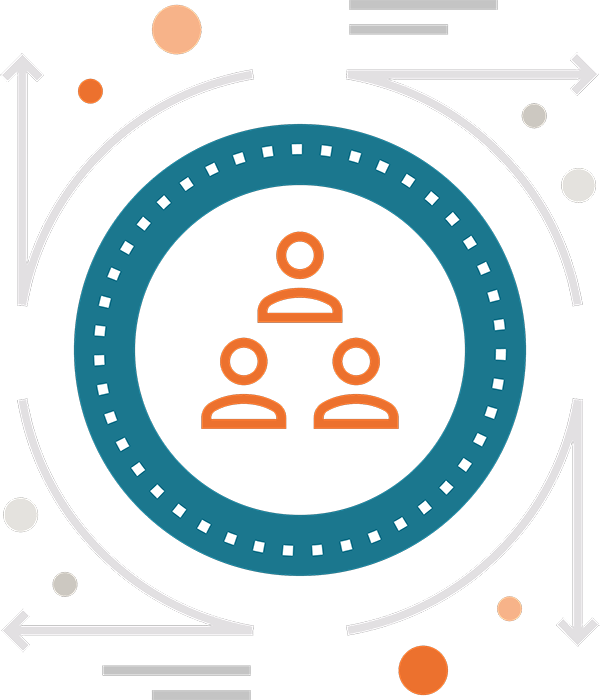Breadcrumb Navigation
- Home
- Civic Committee
- Community Violence Intervention (CVI)
Jump to Section
Community Violence Intervention (CVI) is a strategic, community driven approach to reducing gun violence that identifies and supports the small number of individuals at highest risk of perpetrating or becoming victims of violence through targeted, evidence-informed strategies.
The Civic Committee’s investment in scaling these programs represents our most direct intervention strategy, complementing our longer-term prevention efforts in hiring, public safety infrastructure, and community economic development.
Get Involved
Whether you're a business with jobs to fill, a community leader ready to collaborate, or an individual eager to contribute, there are many ways to participate.
About CVI
CVI focuses on individuals most vulnerable to involvement with gun violence, either as perpetrators or victims. These individuals often face multiple risk factors and need targeted support to break cycles of violence.
Though the devastating impact of gun violence is felt by millions, research shows that the group at highest risk of perpetrating gun violence is a relatively small group of approximately 20,000 people in Chicago who can be identified through their social connections to recent violence (as of 2022).
CVI programs aspire to support these individuals by offering services through a proactive, tailored, culturally competent, data-driven, and evidence- and trauma-informed approach designed to interrupt cycles of violence.
For a decade Chicago has had a robust ecosystem of community-based CVI providers with positive individual-level outcomes, including significant reductions in violence. However, the reach of these programs has been sub-scale relative to the need for service—serving only 15-20 percent of the estimated 20,000 highest-risk individuals citywide—and they have not demonstrated a neighborhood-level impact.
Strategy
The Civic Committee and its partners in philanthropy raised $100 million of private funding to scale CVI programs over five years through a new initiative, Scaling Community Violence Intervention for a Safer Chicago (SC2).
SC2 is a public-private initiative led by community-based organizations, philanthropic and corporate partners, practitioners, and public agencies designed to substantially reduce community violence. Its goal is to reach at least 75 percent of the highest-risk individuals in the Community Areas most impacted by violence. SC2 has built on the existing CVI infrastructure and research from past initiatives, supported by philanthropy, to form neighborhood coalitions and develop a holistic suite of five CVI services (pictured below) that are available to each participant to lower their risk level.
Through this, SC2 brings increased professionalism, operational capacity, and coordination to community-based CVI organizations in Chicago. SC2 is designed to fulfill the aspiration to be proactive, tailored, culturally competent, data-driven, and evidence- and trauma-informed.
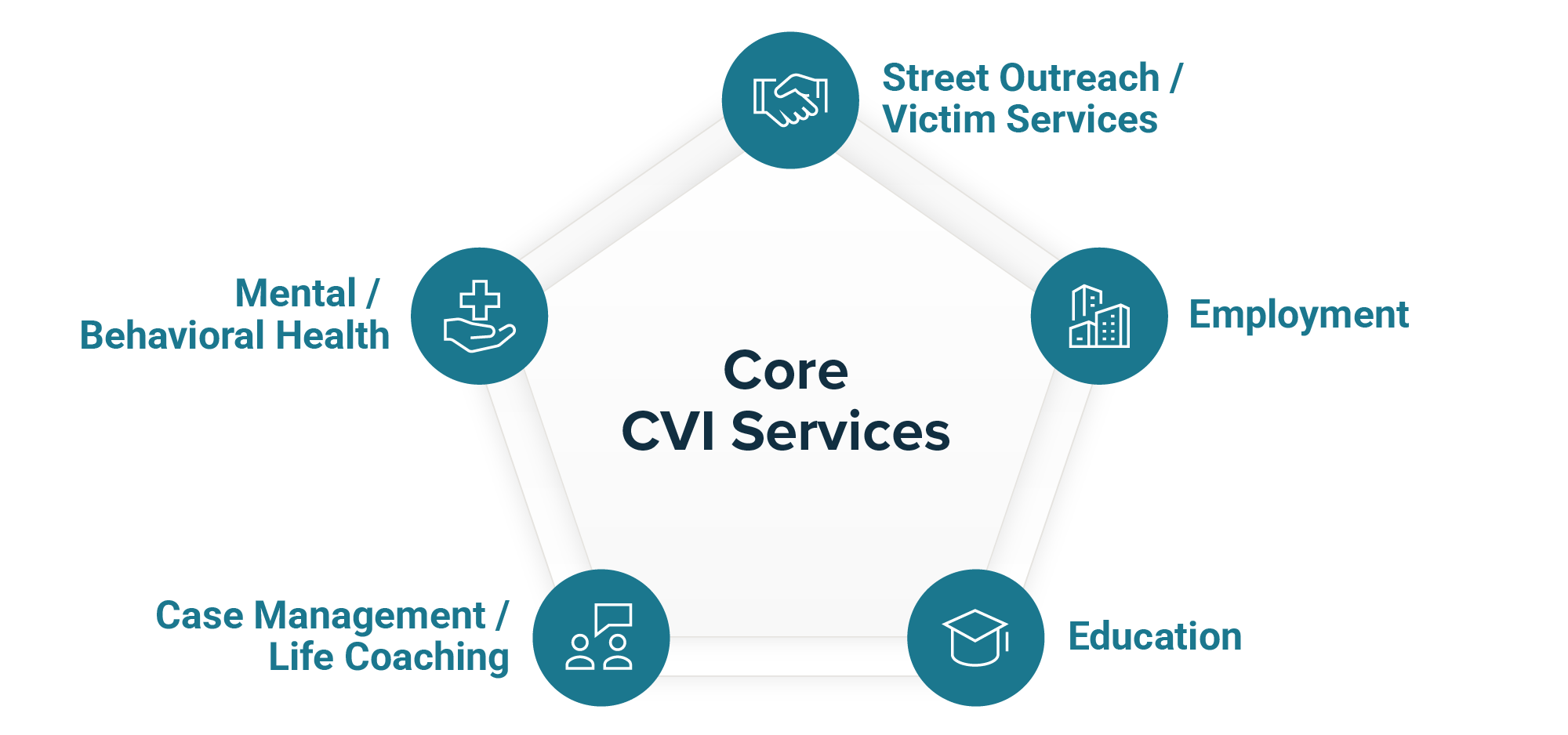
SC2 also mediates disputes, negotiates peace agreements, and occupies dangerous locations. The hypothesis is that if SC2 successfully facilitates peace among groups in conflict, integrates high-quality delivery of five core services, uses multi-source data to inform decision-making, and reaches at least 75 percent of the individuals in a community at the highest risk of violence, then there will be fewer shootings and homicides and, through spillover effects, the overall environment of physical safety will change, further reducing shootings and retaliatory shootings, the incentive to carry weapons, and other conditions that fuel gun violence.
SC2 works with neighborhood organizations through a “hub and partner” model. A hub organization is a well-established and proven community-based organization (CBO) within an SC2 Community Area. The hub takes responsibility for coordinating neighborhood coalitions, fiscal oversight, grant management, and operational accountability within its SC2-supported Community Area. Partner organizations are CBOs in an SC2-supported Community Area that are identified by the hub as having the ability to scale. These partners work with the hub to deliver the suite of five services to participants in their local neighborhoods.
Community Areas
SC2 is currently implementing the approach in four Community Areas and is supporting capacity-building in an additional three Community Areas. Each Community Area is at a different stage of implementation due to its unique starting point. The planning and implementation phases are tailored to each Community Area and led by local organizations with the right expertise and credibility in that location. The tailored approach and timeline for each Community Area are detailed below.
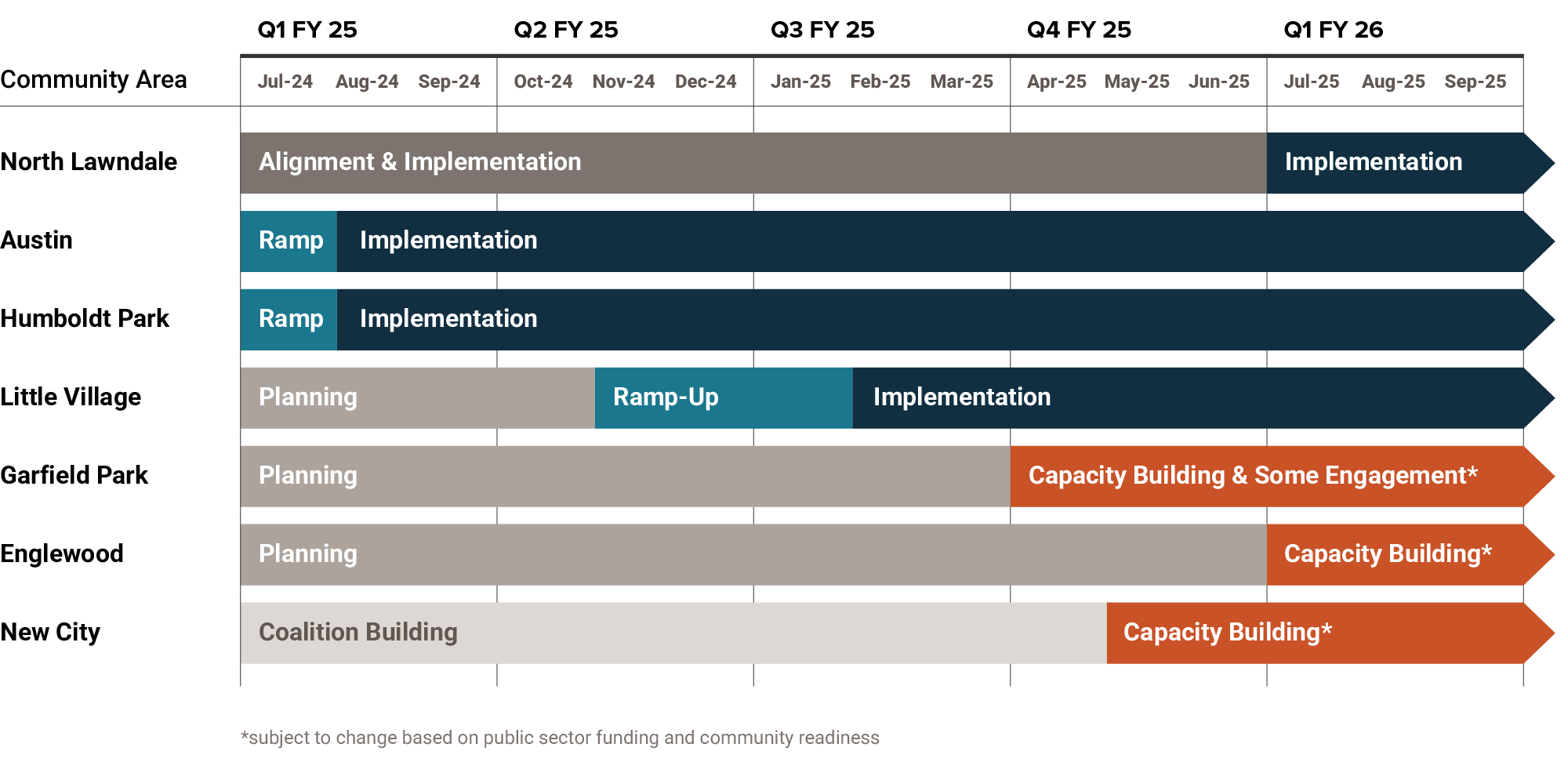
Tracking Progress
SC2 reports key performance indicators (KPIs) quarterly to measure the impact that SC2 is having in neighborhoods. These KPIs are intended to measure impacts on individuals, organizations, and the community. KPIs that are currently available are displayed below.
North Lawndale is the pilot Community Area for this work and began implementation in January 2022 and has engaged participants in each of the five core activities. Data for North Lawndale will be reported beginning in fall 2025.
Austin and Humboldt Park began implementation in August 2024 and most participants are still in the early phase of their journey, so far having been primarily engaged by outreach, case management and life coaching staff. Little Village (South Lawndale) began implementation in February 2025 and therefore these participants are also still in the early phase of their journey. As participants mature through the programs, additional KPIs (including CVI graduation rate, employment, and retention) will be added.
Partnerships
SC2 is a shared strategy of the Partnership for Safe and Peaceful Communities (PSPC), the Civic Committee of the Commercial Club of Chicago, CVI leaders Chicago CRED and Metropolitan Peace Initiatives (MPI), the public sector (City of Chicago, Cook County, and State of Illinois), and major donors. Representatives of each, along with local community CVI leaders, comprise a steering committee that guides the initiative.
SC2 Neighborhood Hubs
SC2 Funders

Lewis-Sebring Family Foundation
Government Alliance for Safe Communities (GASC)
A governmental collaboration between the State of Illinois, Cook County, and the City of Chicago to support communities in building and promoting safety. Learn more at ILGovAlliance.org.

City of Chicago

Cook County

State of Illinois
Participating Agencies
- Illinois Department of Human Services
- Illinois Criminal Justice Information Authority (ICJIA)
- Cook County Office of the President
- Cook County Justice Advisory Council
- Chicago Mayor’s Office of Community Safety
- Chicago Department of Public Health
- Chicago Community Safety Coordination Center
Methodology
Definitions
- Active Participants: Participants who have received any of the five core services within last 30 days.
- Outreach Contacts: The total number of interactions outreach workers had with high-risk individuals (including active participants and non-participants).
- High-risk individual: A high-risk individual is someone who meets at least four of the following criteria: (1) high probability to shoot someone, participate in violence, or be a victim of violence; (2) close affiliation with a known victim of violence or shooting; (3) gang/group/clique/crew involved; (4) key individual in street organizations; (5) prior criminal history/repeat offender; (6) recently released from jail/prison; (7) weapons carrier; (8) history of street conflicts.
Sources
Scaling Community Violence Intervention for a Safer Chicago (SC2)
Additional Notes
KPI data reflects data from SC2 only and does not include activities from other CVI organizations in Chicago.


